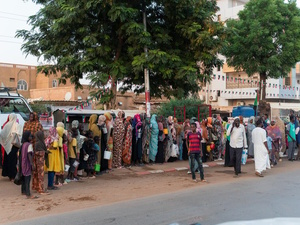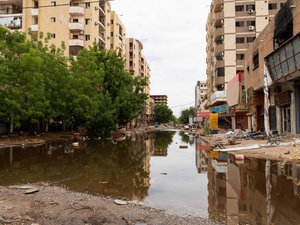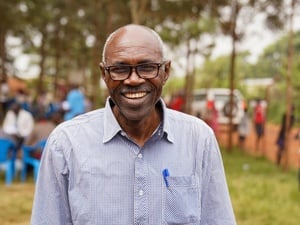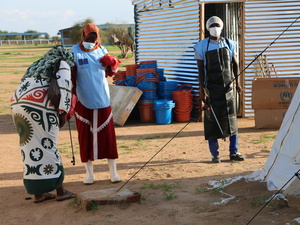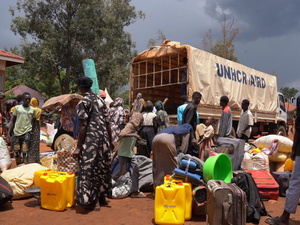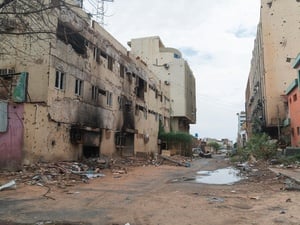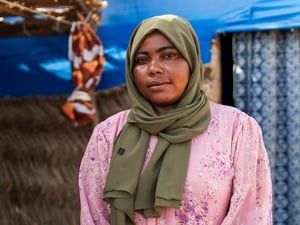60,000 flee South Sudan's recent violence to nearby countries
60,000 flee South Sudan's recent violence to nearby countries

South Sudanese refugees gather at a UNHCR collection centre on the South Sudan border in Egelo, Uganda.
GENEVA – Refugee flows from South Sudan into Uganda have doubled in the past ten days, bringing to more than 52,000 the total number who have entered the country since violence escalated three weeks ago, UNHCR, the UN Refugee agency, said today.
Neighbouring Kenya, meanwhile, has reported the arrival of 1,000 refugees in the same period, while 7,000 have fled to Sudan.
In total, 60,000 people have fled the country since violence broke out in Juba last month, bringing the overall number of South Sudanese refugees in neighbouring countries since December 2013 to nearly 900,000.
UNHCR spokesperson Melissa Fleming told a press briefing in Geneva that refugees brought disturbing reports that armed groups operating on roads to Uganda are preventing people from fleeing South Sudan.
"Armed groups are looting villages, restricting movement and forcibly recruiting young men into their ranks.”
“Refugees have also reported that armed groups operating across different parts of South Sudan are looting villages, restricting movement and forcibly recruiting young men and boys into their ranks," Fleming said.
The world’s youngest nation, South Sudan gained independence from Sudan in 2011. Since conflict erupted in December 2013, it has produced one of the world’s worst displacement situations, along with immense suffering.
More than 85 per cent of the refugees currently arriving in Uganda are women and children under the age of 18. Many children have lost one or both of their parents. Most are from Eastern Equatoria state, with smaller numbers from the capital, Juba, and Upper Nile state. Many took advantage of the opportunity to flee alongside Ugandan military convoys evacuating Ugandan nationals.
Improving conditions and capacities at existing reception facilities in Uganda is a key priority. Collection points in border areas have now been significantly decongested, although transit centres and reception centres remain severely stretched. Efforts are underway to open rapidly a new 100,000-capacity refugee settlement area in Yumbe district.
“Kenya and Uganda are reporting rising cases of severe malnutrition, particularly among very young children."
“Both Kenya and Uganda are reporting rising cases of severe malnutrition, particularly among very young children. Those found to be suffering are being placed on food nourishment programmes to bring them back to health,” Fleming said.
Inside South Sudan, where aid agencies are concerned about inability to provide urgent help to needy populations, the generalized collapse in the protection of civilians is also affecting many of the 250,000 refugees, mainly from Sudan, Ethiopia and the Democratic Republic of the Congo.
Since the outbreak of fighting in Juba, UNHCR’s access to 2,000 Ethiopian refugees living in Gorom camp, near the capital, has been severely curtailed due to insecurity on the road and militarization of the area surrounding the camp, leaving them extremely vulnerable. The camp is surrounded by military barracks; movements of soldiers through the camp and sporadic gunfire have still been reported by refugees.
In the Maban refugee camps in Upper Nile state, three public health-care units were temporarily unable to function after technical staff were stranded in Juba. However, refugees were attended to in some of the other existing health facilities in the respective camps.
UNHCR is reminding all parties to the conflict in South Sudan of the fundamental human right to seek asylum and urging them to ensure that civilians are provided with unhindered access to safety as the number of refugees crosses a worrying milestone.
With over 2.6 million of its citizens forcibly displaced, South Sudan currently ranks among the countries with the highest levels of conflict-induced population displacement globally. Half of its people rely on humanitarian aid.


